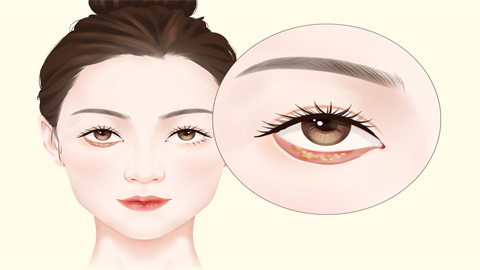What causes hard lumps after stye surgery?
Stye usually refers to hordeolum. Generally, the appearance of a hard lump after hordeolum surgery might be caused by postoperative tissue repair, impaired local blood circulation, incomplete resolution of inflammation, wound infection, or excessive granulation tissue proliferation. If discomfort occurs, timely medical consultation is recommended. Detailed explanations are as follows:
1. Postoperative Tissue Repair
Surgery causes local tissue damage, and scar tissue may form during the healing process. In the early stages, this can present as a hard lump, which usually softens gradually over time. Local heat application may be performed appropriately, 2-3 times daily for 10-15 minutes each time, to promote softening of the scar. Rubbing the eye should be avoided to prevent tissue irritation.
2. Impaired Local Blood Circulation
Surgery may affect the circulation around the eye, causing obstruction of blood and lymphatic drainage, which can lead to localized swelling and formation of a hard lump, possibly accompanied by mild swelling. Adequate rest is important post-surgery, and prolonged eye use should be avoided. Appropriate eye movement can help promote circulation, and eye massage may be performed under a physician's guidance.

3. Incomplete Resolution of Inflammation
If the inflammation of the hordeolum has not fully resolved, persistent local inflammation may cause tissue proliferation and the formation of a hard lump, possibly accompanied by mild redness. Patients should continue anti-inflammatory treatment under a physician's guidance, using medications such as tobramycin eye drops, erythromycin ointment, or ofloxacin eye drops.
4. Wound Infection
Infection due to improper postoperative wound care can lead to inflammatory stimulation, causing local tissue swelling and proliferation, resulting in a hard lump, often accompanied by pain and increased discharge. Treatment under a physician's supervision with medications such as levofloxacin eye drops, cefaclor capsules, or tobramycin-dexamethasone ointment may be necessary to control the infection.
5. Excessive Granulation Tissue Proliferation
Excessive proliferation of granulation tissue during wound healing may result in a noticeable hard lump, possibly protruding from the skin surface. Prompt medical consultation is advised, and management will be determined after physician evaluation. Under medical guidance, medications such as flumetholon eye drops, pranoprofen eye drops, or diclofenac sodium eye drops may be used to inhibit granulation tissue proliferation.
In daily life, maintaining ocular hygiene and avoiding entry of contaminated water into the eye is important. Medications should be used according to medical instructions, with regular follow-up visits. A light diet avoiding spicy and irritating foods is recommended to promote wound healing.






